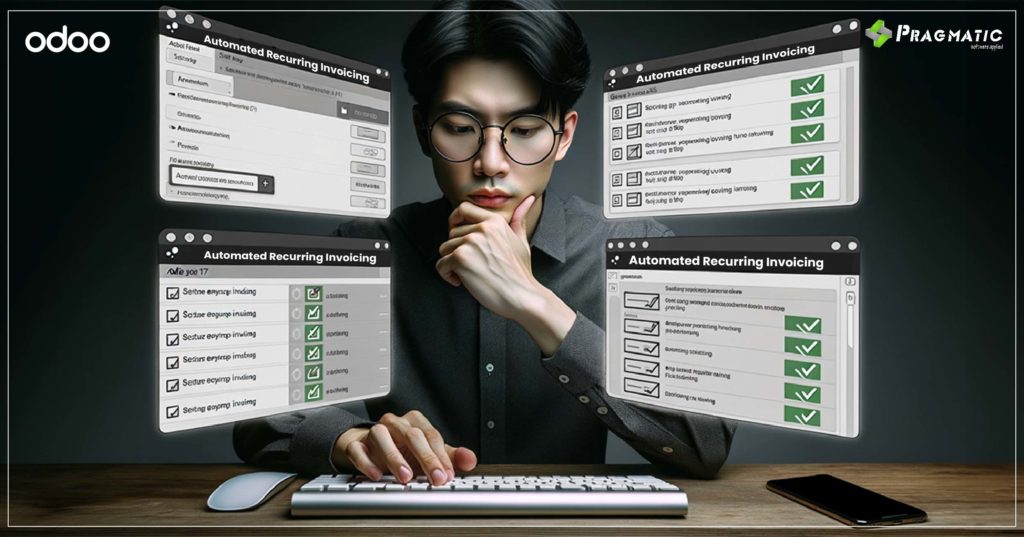


1) Accessing Invoicing Module
Navigate to the Invoicing module from your Odoo dashboard.
This module houses various options to manage and streamline your invoicing processes.
2) Creating Recurring Invoice Templates
Under the Customers menu, go to Subscriptions to create or edit existing templates.
Specify the invoicing frequency (monthly, quarterly, or annually), invoicing period, and due date.
3) Defining Invoicing Parameters
Select the customer and add products or services to the invoice, akin to how you would for a regular invoice.
Set the due date which indicates the date by which the customer needs to settle the invoice.
4) Activating and Monitoring Recurring Invoices
Activate your recurring invoices, which Odoo will automatically generate based on the specified frequency.
Monitor, modify or cancel recurring invoices under the Subscriptions menu as per your business needs.
5) Customization (For Advanced Users)
Delve into Odoo’s Python API to create custom invoicing rules or to integrate with other business processes for more complex recurring invoicing setups.
Example : Consider a scenario where you offer a monthly software maintenance service.
Odoo 17 will automate the invoice generation on the first of each month, emailing it to the customer while storing a copy in Odoo.
Automated Recurring Invoicing in Odoo 17 is more than a feature; it’s a significant stride towards operational efficiency, error reduction and improved cash flow.
Transitioning to newer Odoo versions is a breeze with Pragmatic Techsoft.
Our seasoned team, well-versed with Odoo intricacies, ensures a smooth migration process, enabling you to harness the full potential of Odoo 17’s features, including automated recurring invoicing.
Stay tuned to our website and blogs for more in-depth insights and guides on leveraging the myriad capabilities of Odoo 17, brought to you by the experts at Pragmatic Techsoft.
Leave a Reply
You must be logged in to post a comment.